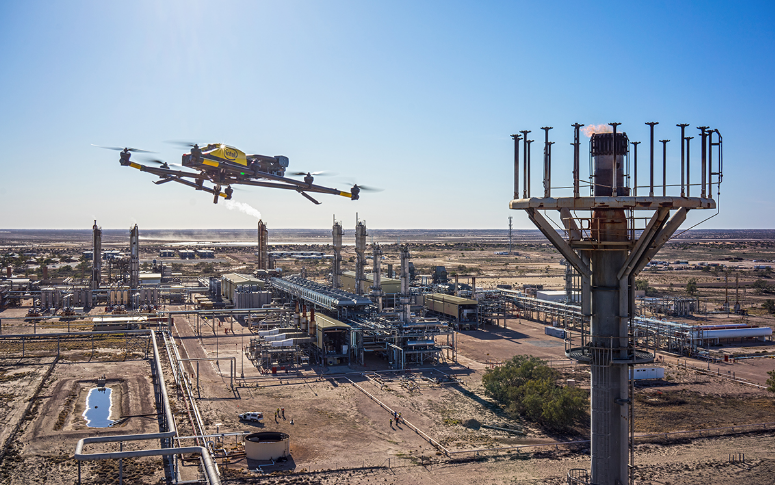The fantastic advantages of Geographic Information Systems (GIS) technology are becoming apparent to businesses of all stripes. But what exactly is GIS?
Companies that use GIS may enhance operations, acquire a competitive edge, and make better decisions. GIS technology’s potential impact is unquestionable, even though the proportion of companies utilising it may differ.
This blog will look at different industries that stand to gain a lot from using GIS technology in their daily operations. Knowing how GIS may be used in many sectors can open up a world of opportunity for any organisation, large or small.
How Can GIS Give Your Industry a Competitive Edge?
From urban planning to real estate, GIS transforms decision-making. Find the right solution with GIS Navigator!
📞 Schedule a Call | 📩 Email Us | 💼 Get a Quote Now
Different Industries that Are Using GIS:
Environmental Agencies
Environmental agencies use GIS to collect and store vital data to track and monitor habitat, wetland, and coastal shoreline erosion, identify areas where threatened species are found, and monitor water supplies and other natural resources. Pattern recognition can also forecast changes in glaciers, soil erosion, and natural calamities.
Every environmental data collected is crucial for supporting conservation, protection, and restoration initiatives. Researchers and conservationists’ data is also available for use by other companies.
Utility Companies
The utility industry is one of the most frequent users of GIS, and they do the following with its assistance:
- Coordinating grids and seeing trends in consumer behaviour, blackouts, and supply problems
- Keeping an eye on and tracking pipelines
- Finding the location of water wires and pipes
- Networks in Wireless
- Planning for Construction
- Observe resources and field personnel
GIS helps to enhance efficiency and effectiveness, save time and money, and manage and monitor overhead and subsurface utilities with its extensive database.
Infrastructure Companies
Businesses that use geographic information systems (GIS) in the infrastructure sector map manage and oversee the construction of our roads, buildings, energy and water supply lines, and the fundamental infrastructure of society.
GIS streamlines communications, boosts field worker productivity and effectiveness, aids in worker and asset monitoring, records and archives consumer usage and problems, raises client and customer satisfaction, and much more.
Telecommunications

The telecom industry extensively uses GIS to track real-time data on usage, outages, and signal strength to understand customer trends and requirements better.
Additionally, telecom businesses utilise GIS to plan for future expansion, mitigate issues, and optimise their resources effectively and efficiently.
Retail
Retail establishments rely on understanding where their clientele works or resides and how far they can travel to make purchases. With GIS data, retail businesses can better organise their marketing campaigns to target their desired customer base, optimise inventory and sales, and pinpoint their location.
Government
The government needs geographic data to make choices based on current knowledge. Government activities are spatial, concerning utilities, infrastructure, fires, accidents, emergency response, etc.
Banking
Banks are picky about where to locate their branches; they consider things like the area’s crime statistics and prospective clientele. Financial institutions must make strategic decisions as the banking industry evolves due to rising online service usage and shifting client expectations. To increase profitability, institutions may occasionally need to close or combine branches. Deciding which branches to close can be difficult, mainly when several operate effectively.
Before using GIS software, decision-makers frequently used paper maps with branch locations marked with Sharpies, pasted to walls, or pinned to them. Banks can find sites with lower utilisation rates, more excellent loan default rates, or adjacent competitors more quickly when using GIS software.
Demographics can also be mapped using GIS to determine which areas require items the most. For instance, additional auto insurance may be necessary in places with high car ownership rates.
Agriculture
All animals and humans require food to survive. The agricultural sector uses GIS to identify water supplies, weather dangers like flooding and drought, and usable vs. unusable fertile land.
Urban Planning
City planning involves more than finding empty spaces and erecting structures on them. The location of public, commercial, and residential buildings affect residents’ standard of living.
As modern cities grow, planners need more space to fix ageing infrastructure or add a building or road. Developers are also required to consider the potential effects on flora and fauna. Urban planners primarily rely on GIS technology to appropriately accommodate a community’s residents while minimising harm to historic structures or natural places.
By looking at spatial data, planners can ascertain a city’s most effective approach to introducing alternative energy supplies. When installing renewable energy infrastructure on a smaller scale, such as in vacant parking lots, GIS mapping can help determine the optimal locations for wind and solar farms.
Looking to Improve Efficiency with GIS?
Discover how businesses worldwide use GIS to streamline operations.
📞 Schedule a Call | 📩 Email Us | 💼 Get a Quote Now
Healthcare

The public health field aims to handle issues as they arise effectively, focus on illness trends within communities, and guide preventative initiatives. Modern GIS technology can assist health organisations in analysing noteworthy trends, as medical practitioners have long understood. Their location can impact patients’ well-being. Health and human services organisations utilise the software to map disease cases and identify high-risk regions or common sites of origin.
The Centres for Disease Control and Prevention use GIS technology to handle a range of public health concerns. For instance, a map showing the death rates from heart disease between 2011 and 2013 indicates that Nevada and the Southern United States had high-risk rates. In contrast, the risk is substantially reduced for people who live in Minnesota, the Pacific Northwest, and Colorado. Using this data, public health experts might implement initiatives such as launching heart disease prevention awareness campaigns in high-need locations.
Insurance Companies
Insurance firms assess risk based on accurate forecasts. In almost all insurance industries, geography is a crucial determinant of risk. However, there are many other aspects of carefulness. Not only do some localities have a higher likelihood of earthquakes, hurricanes, floods, or other natural catastrophes, but societal elements, such as a tendency towards criminality, also tend to concentrate areas.
With more accurate projections, insurance firms can better determine coverage premiums. Based on this data, professionals can map risk levels using GIS tools.
- Historical information that can indicate how likely it is that an event like a storm will occur
- Demographics, which may provide information about a person’s likelihood of being in an automobile accident
- Local topography, which can point to the probability of a landslip or other disaster
Supply Chain Management
How goods and services are introduced to the market has changed significantly in recent years due to shifting consumer tastes and the explosive expansion of e-commerce. Today, firms that utilise GIS can save money on their supply chains by increasing their efficiency through the capacity to track shipments and inventory.
Produce distribution to supermarkets worldwide is one instance. Agricultural items are harvested and distributed from tiny farms to grocery stores across multiple states and countries. Ripe but not spoilt, the produce must arrive in perfect condition.
Thanks to GIS technology, professionals in agriculture and supply chains can learn when fruits and vegetables were harvested from the field, how they got there, and how good they were when they got there. If produce looks unappealing at the store, employees can track the goods’ origins to find trouble spots and increase the likelihood that upcoming deliveries will come in better shape.
Advantages of GIS Technology

GIS uses several components to translate data; your company can use it to profit from its many features.
The benefits of GIS include:
- Increasing intelligent decision-making backed by reliable, comprehensive data. Improving departmental integration makes it easier for people to collaborate.
- Enhancing Interaction in an Emergency
- encourages and sustains the creation and application of an effective information system
- Identifies risks and dangers to help people, companies, and management make wise decisions.
- enhances planning and resource allocation
- An indispensable instrument for managing natural resources
- It will save energy, money, and time for your industry.
- Increasing citizen participation and industry openness creates more opportunities for businesses and employees.
- Keep an eye on resources, employees, consumer trends, and utilisation.
Today, GIS is crucial for many industries, changing how companies choose and conduct their businesses. Here are a few industries that currently use GIS to their advantage.
Some tips before you hire GIS experts
Here are some tips for selecting the best GIS specialists if you use GIS technology in your company.
The following five tips can help your business hire GIS specialists:
- Define your needs
- Consider your budget
- Assess their technical skills
- Understand their knowledge of GIS applications
- Check for project management skills
- Communication skills
The size and duration of your GIS project, your ongoing needs, and your budget will all play a role in deciding whether to engage with an agency, hire a full-time expert, or hire help part-time. A full-time specialist can be the best option if you have consistent GIS demands and a set budget. Part-time assistance or an agency can offer the required experience for smaller projects or sporadic demands without requiring a long-term commitment.
Bring the Power of GIS to Your Industry
Enhance accuracy, optimize workflows, and make smarter decisions. See how GIS Navigator can support your goals!
📞 Schedule a Call | 📩 Email Us | 💼 Get a Quote Now
Conclusion
GIS technology has many advantages for different types of enterprises and organisations. GIS is used in various industries, from retail chains to government agencies, energy businesses, and environmental protection organisations.
It’s critical to carefully assess your organisation’s unique needs, finances, and abilities to utilise GIS powerfully. Finding the proper GIS professionals with the required technical capabilities, industry expertise, and communication talents is essential, regardless of whether you decide to work with a GIS agency, hire a full-time expert, or engage with a part-time consultant.



